The wonderful city of Barcelona is one of my favourite places in the whole world. I may be slightly biased with having a partner from this incredible place, however, I have come to really appreciate the never-ending cultural experience that can be found here. This is a neighbourhood guide to El Raval, an area in Barcelona, Spain. f you want to read about other neighbourhoods in Barcelona, check out my other posts here.
Ah, the Raval, the alternative paradise of Barcelona… what once was the city’s red-light district has since cleaned up its act and now welcomingly opens its doors to the rest of the city (and the world). Okay, that was decades ago, but it’s still worth mentioning the Raval’s history as it retains some of its grimy character today. At the same time, the Raval is one of the most colourful and lively parts of Barcelona and will undoubtedly show you a good time. Is that not why you come to a city anyway? To see its true colours?
Just west of La Rambla, I can only try to convince you that the Raval is a special place, but you’ll only know yourself if you go out to wander its medieval streets. It’s historic, but also gothic and a bit modern too. It’s a haven for artists and creators alike, and if you need evidence just look up and see all the street art blanketing the walls. One of the most iconic pieces of art here is actually a sculpture. Fernanco Botero’s El Gato de Botero lives along the ramble of the Raval. It’s a giant bronze cat with whiskers and is just such a fun mascot. For years it was nomadic as it moved from place to place but finally landed here. Cats are curious and independent by nature, so it’s a perfect image to encapsulate the Raval.

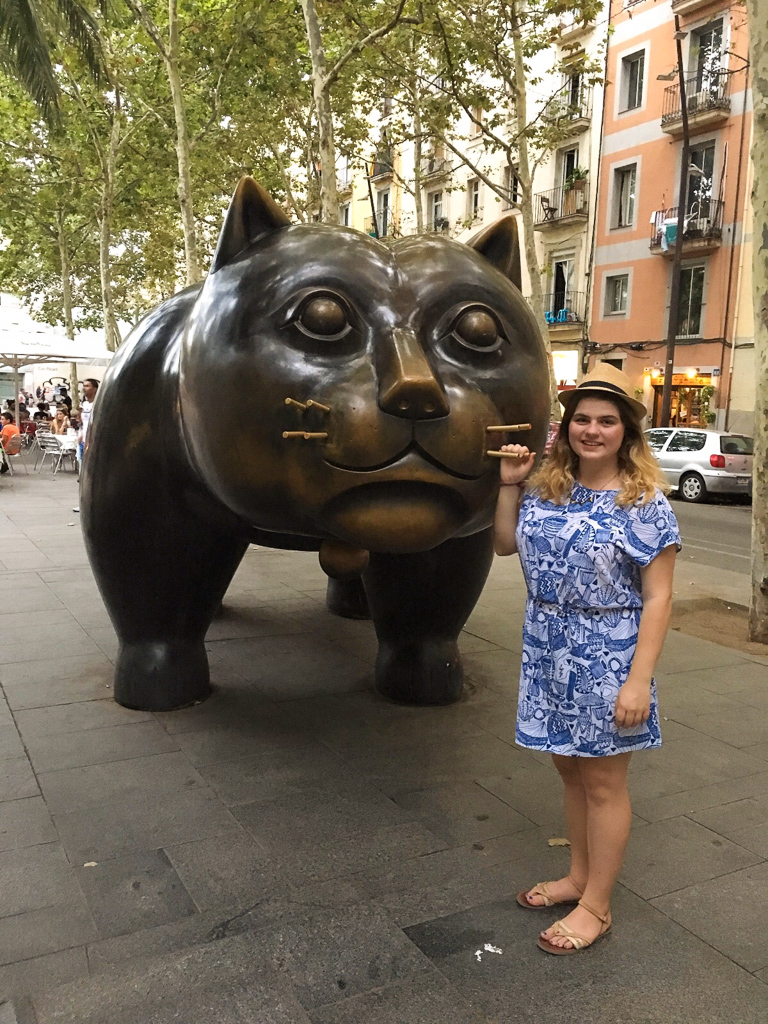
Attractions
Long before the Raval was part of downtown Barcelona, Antoni Gaudí was designing a mansion for the industrial tycoon Eusebi Güell. Aptly named Palau Güell, this glorious home is a highlight in the area. It’s pretty unusual as I wouldn’t say it’s in Gaudi’s most typical style. This is because it’s one of his earliest so he hadn’t quite cemented his signature style. However, there’s definitely something very unique about this architectural gem. It’s designed in the Art Noveau tradition and was made with such incredible materials including wrought iron, wood, stone, ceramics and glass. It almost feels Venetian, but also like Henry VIII’s hunting lodge.



For me, the most spectacular architectural feature of the building is the rooftop. There are several chimneys and Gaudí transformed the cowls of these chimneys into sculptural elements clad with trencadís mosaic. Trencadís is a technique used to cover structures with a mosaic, normally abstract, of irregular pieces of ceramic, glass or marble tiles. This was the beginning of Gaudi setting his signature look.

 The regeneration and revival of the Raval were somewhat spurred by Barcelona winning the Olympics hosting ticket for 1992. The government focused on cleaning up the Raval and with that came several new buildings and resources. One such project was the Museum of Contemporary Art (MACBA). It’s a modern building with tons of white painted spaces and tall ceilings.
The regeneration and revival of the Raval were somewhat spurred by Barcelona winning the Olympics hosting ticket for 1992. The government focused on cleaning up the Raval and with that came several new buildings and resources. One such project was the Museum of Contemporary Art (MACBA). It’s a modern building with tons of white painted spaces and tall ceilings.
The museum itself is quite interesting to peruse, but what’s also interesting is checking out the makeshift skate park right outside the building! It is ‘the skating spot’ in Barcelona and one of the most famous spots in the world. Apparently, there are official days when skaters can skate but I’ve never seen the stone area not full of skaters — just another neat, alternative aspect of a neighbourhood I love (too bad I can’t skate).
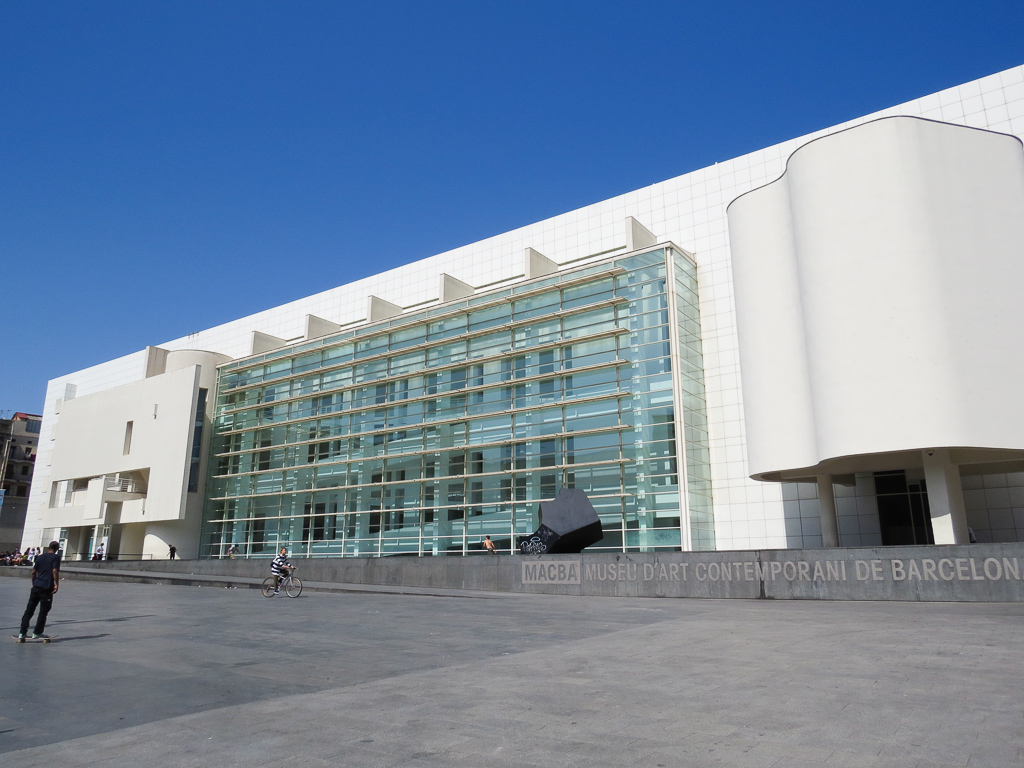
 Another interesting part that is not actually within the museum is a reproduced mural by Keith Haring. He painted the original mural in 1989 when the Raval was notorious for its severe drug problem. In the mid-90’s the mural was disintegrating so a tracing was made, and the mural was transferred to an outdoor wall outside the MACBA.
Another interesting part that is not actually within the museum is a reproduced mural by Keith Haring. He painted the original mural in 1989 when the Raval was notorious for its severe drug problem. In the mid-90’s the mural was disintegrating so a tracing was made, and the mural was transferred to an outdoor wall outside the MACBA.
Called Todos juntos podemos parar el sida (Together we can stop AIDS), this work of art is one of my favourite murals of all time.
 Walking around, you’ll find plenty of interesting buildings (both old and new). You might see a tiny church called Santa Pau Del Camp. This church was once a monastery and is the oldest surviving church in Barcelona.
Walking around, you’ll find plenty of interesting buildings (both old and new). You might see a tiny church called Santa Pau Del Camp. This church was once a monastery and is the oldest surviving church in Barcelona.

Food
The Raval has some great places to eat due to its down to earth origins and cultural mix. Being downtown, there’s actually a pretty high standard for food as the competition is fierce. The area is made up of traditional restaurants and bakeries as well as more modern, hip bars and ‘fast food’ spots.
There are a lot of wonderful bakeries in Barcelona, but Forn Mistral is one of the best. It has existed since the early 19th century, being run by the same family for decades. While you’re there be sure to try their cocas or their ensaïmadas. Cocas are kind of like Catalan pizzas… they can be savoury or sweet and there are many varieties. Many saints’ days have their own coca and there are many saints days so you can imagine the amount. My personal favourite is coca de forner, which is just nice a simple: pastry, sugar, anise and pine nuts.


If there’s one major food destination you’ve heard of in Barcelona it’s probably Mercat de Sant Josep de la Boqueria, often simply referred to as La Boqueria. It’s a huge market with rows and rows of fresh fruit, seafood, smoothies, snacks and desserts of all sorts. You can explore this market for hours trying everything from fried eggs with squid to Dutch waffles.


 A wonderful food tradition to try is none other than the humble sandwich! Bocadillos are incredibly common in Spain and Bar Mendizábal serves up some amazing combinations. Some options for ingredients include arugula, mango, lamb, avocado or goats cheese — whatever you really fancy!
A wonderful food tradition to try is none other than the humble sandwich! Bocadillos are incredibly common in Spain and Bar Mendizábal serves up some amazing combinations. Some options for ingredients include arugula, mango, lamb, avocado or goats cheese — whatever you really fancy!

 For another relaxed, casual spot, try out Barcentral. It’s tucked away in a walled-in square along Carrer d’Elisabets. Come here for some snacks and some beer, and enjoy the incredibly relaxed scenery. The ambience here is so incredibly chill — it feels like you’re in some sort of oasis.
For another relaxed, casual spot, try out Barcentral. It’s tucked away in a walled-in square along Carrer d’Elisabets. Come here for some snacks and some beer, and enjoy the incredibly relaxed scenery. The ambience here is so incredibly chill — it feels like you’re in some sort of oasis.
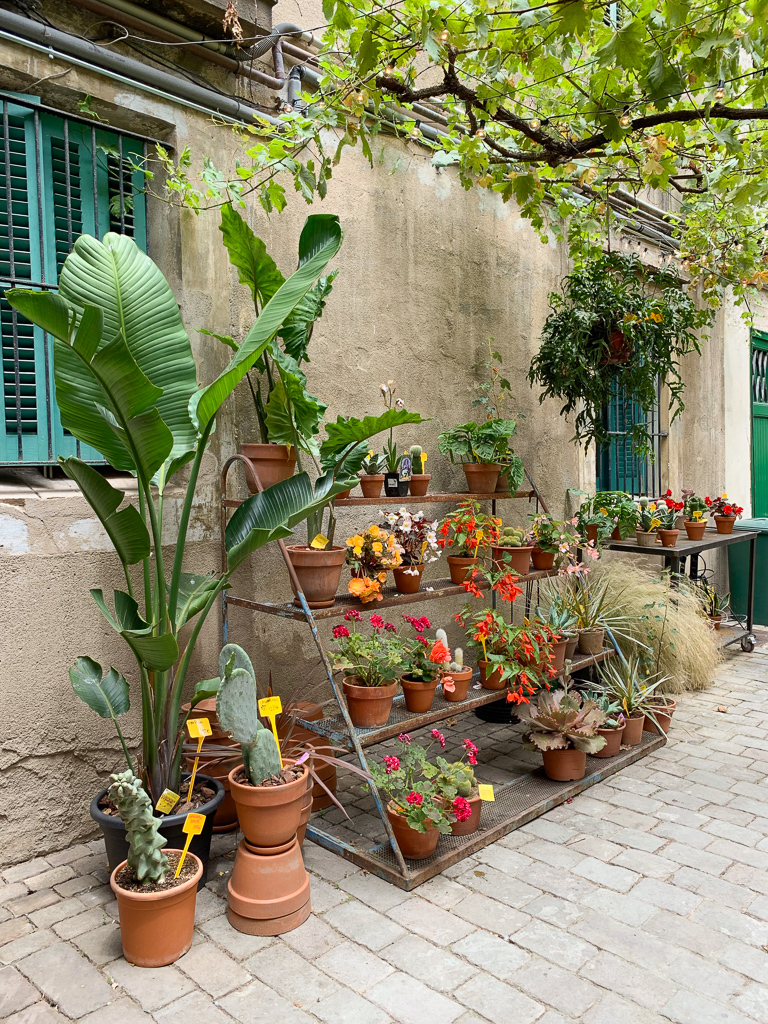
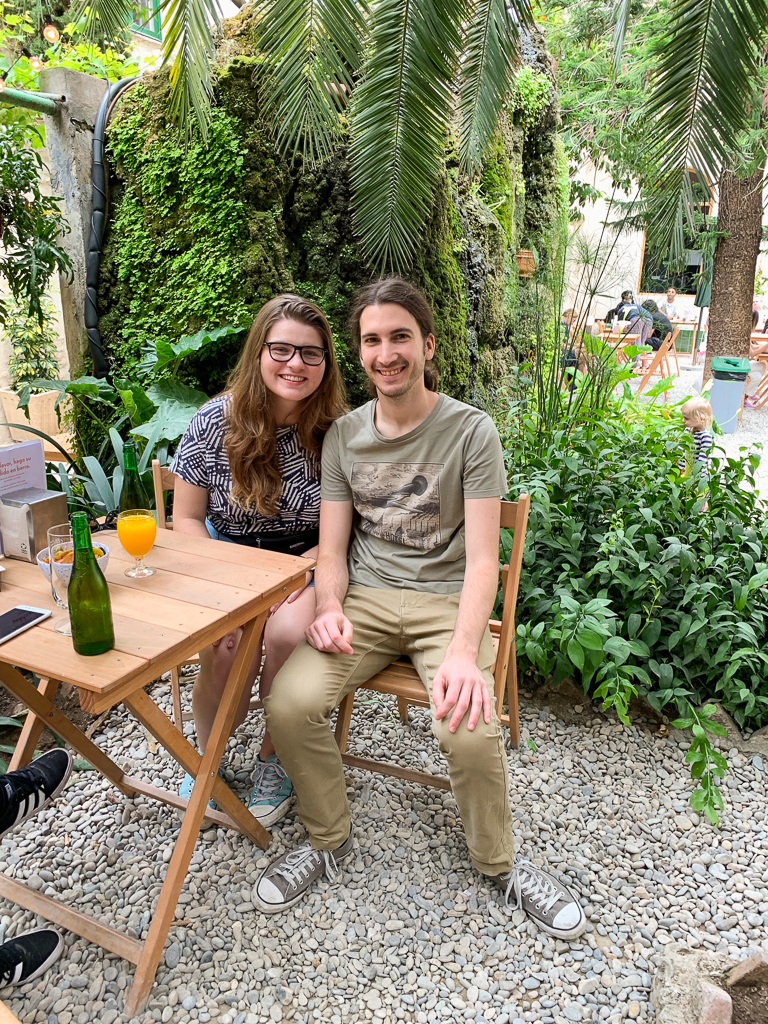
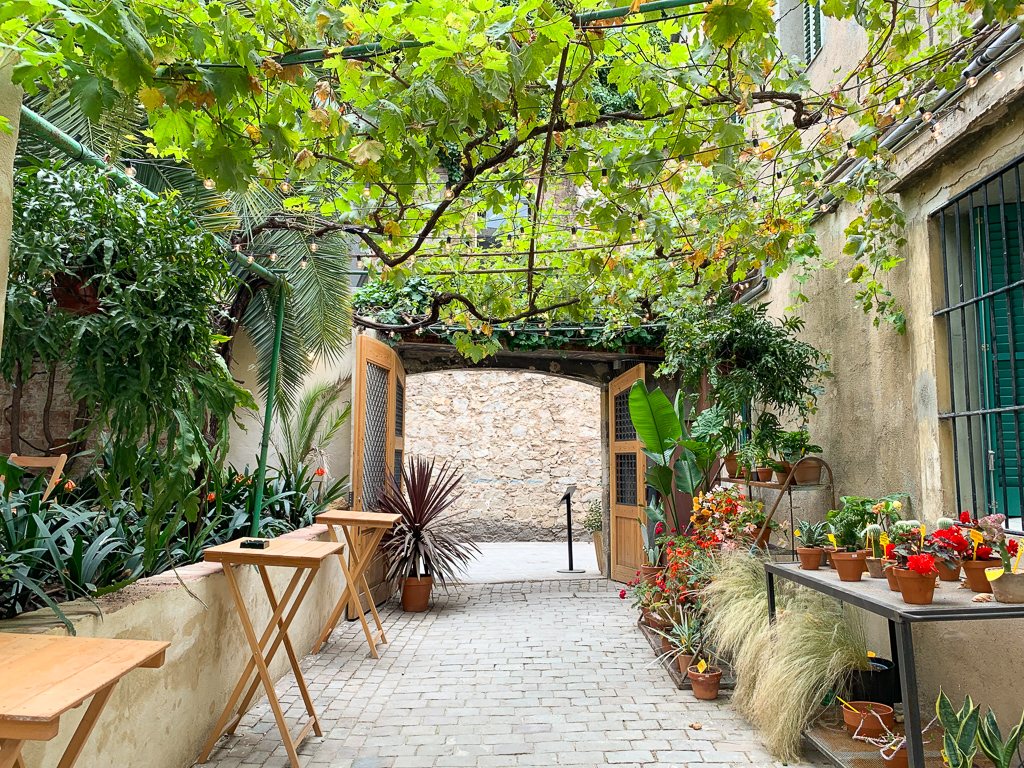
If you want to try something a bit more upscale, why not go for a traditional Catalan restaurant? L’Antic Forn is as authentic as it gets. While they serve tons of traditional Spanish and Catalan dishes throughout the year, if you’re around during calçots season you should definitely out the calçotada. To learn more, check out my other blog post.
Another restaurant I recommend is Teresa Carles. It’s 100% vegetarian and yes, even meat-eaters love this place. Check out my restaurant review here.

Drink
Moving on to drinks! Yes, there are enough great places to get a drink that I need to highlight some places. But, let me start with something a bit different: chocolate milk! Something so integral to Catalan childhood is cacaolot, a chocolate milkshake drink. Invented in 1931, cacaolot’s history is quite important to Barcelona. In 1934, Cacaolat was launched for the first time at the 6th Fira de Mostres in Barcelona and was a great success. The drink then disappeared for over a decade! Today it is incredibly popular and is sold in every grocery store and most eateries.
A place with an equally impressive history is Granja M Viader. In 1870, the Viader family opened their doors to specialise in dairy products. They’ve been serving crema catalana, churros, thick hot chocolate for 125 years. They became one of the first places to sell cacaolot and still sell it today. Nothing feels more Barcelona-like than this charming cafe. It’s so emblematic of the city. In fact, rumours say that Picasso used to frequent this cafe to have that delicious hot chocolate.



Moving on from my cocoa, one of my favourite bars in the area is La Llibertària. As you might’ve guessed from the name, this bar celebrates freedom in an interesting way. Inside, it is almost as if it’s a small museum of anarchist Barcelona of the 1930s and 1940s. The posters, photographs, newspapers and paintings on the walls are all original.

 I have one last recommendation and this one you go to for the views. Barcelo Raval is a contemporary hotel along the Raval’s rambla, but that’s not what’s important. What you need to know is that up near the rooftop there’s a 360 degree bar where you can see some really unique views of the city. You don’t really need to buy anything, just enjoy!
I have one last recommendation and this one you go to for the views. Barcelo Raval is a contemporary hotel along the Raval’s rambla, but that’s not what’s important. What you need to know is that up near the rooftop there’s a 360 degree bar where you can see some really unique views of the city. You don’t really need to buy anything, just enjoy!



And there you have it, the Raval, an incredible area of Barcelona with so much history and culture. There are a ton of gems, so make sure you take the time to seek them out.
Want to explore more of Barcelona? Check out my area guide on the Born.

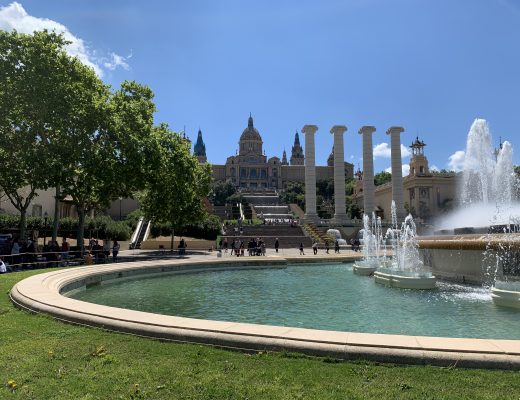
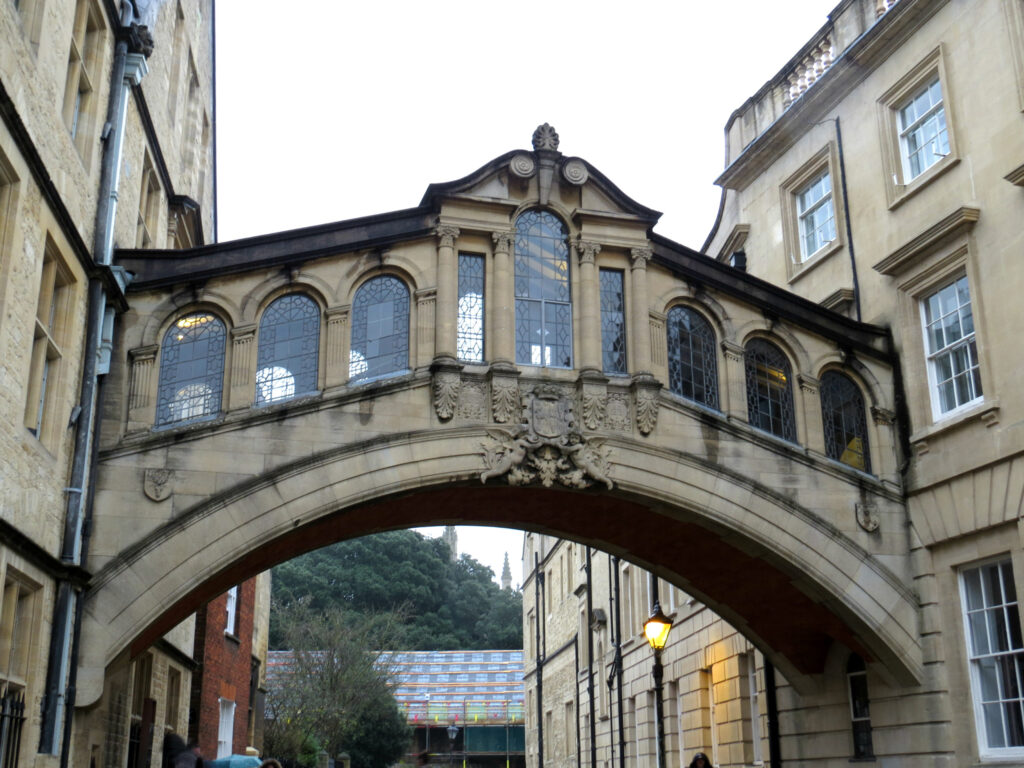
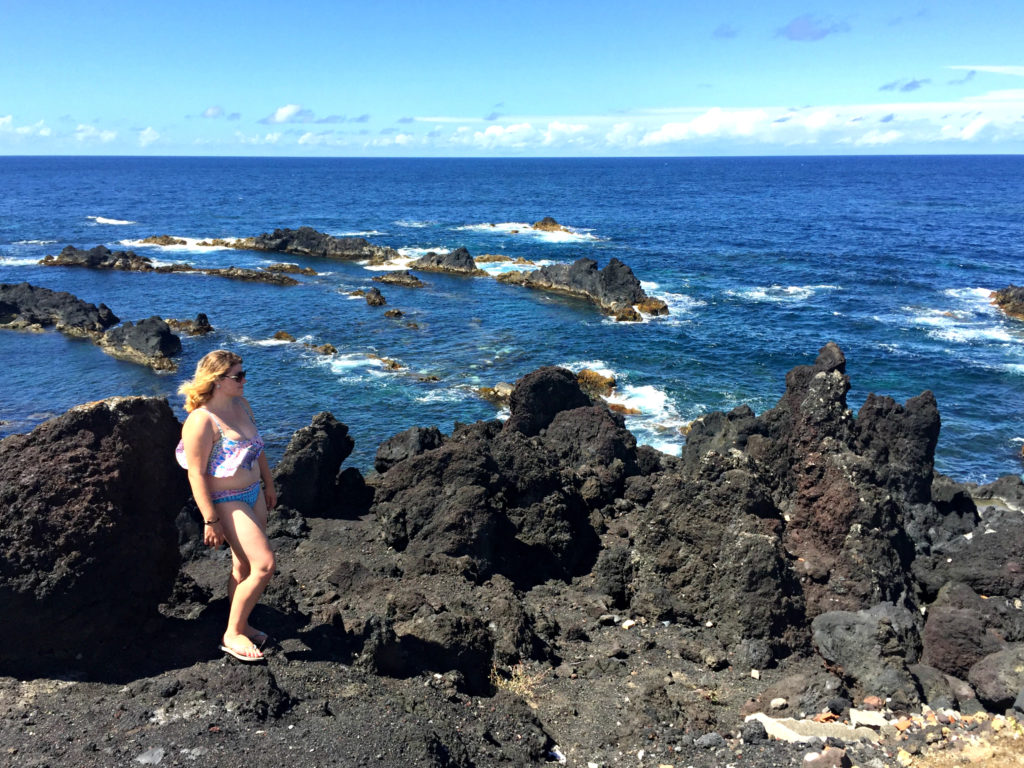
No Comments